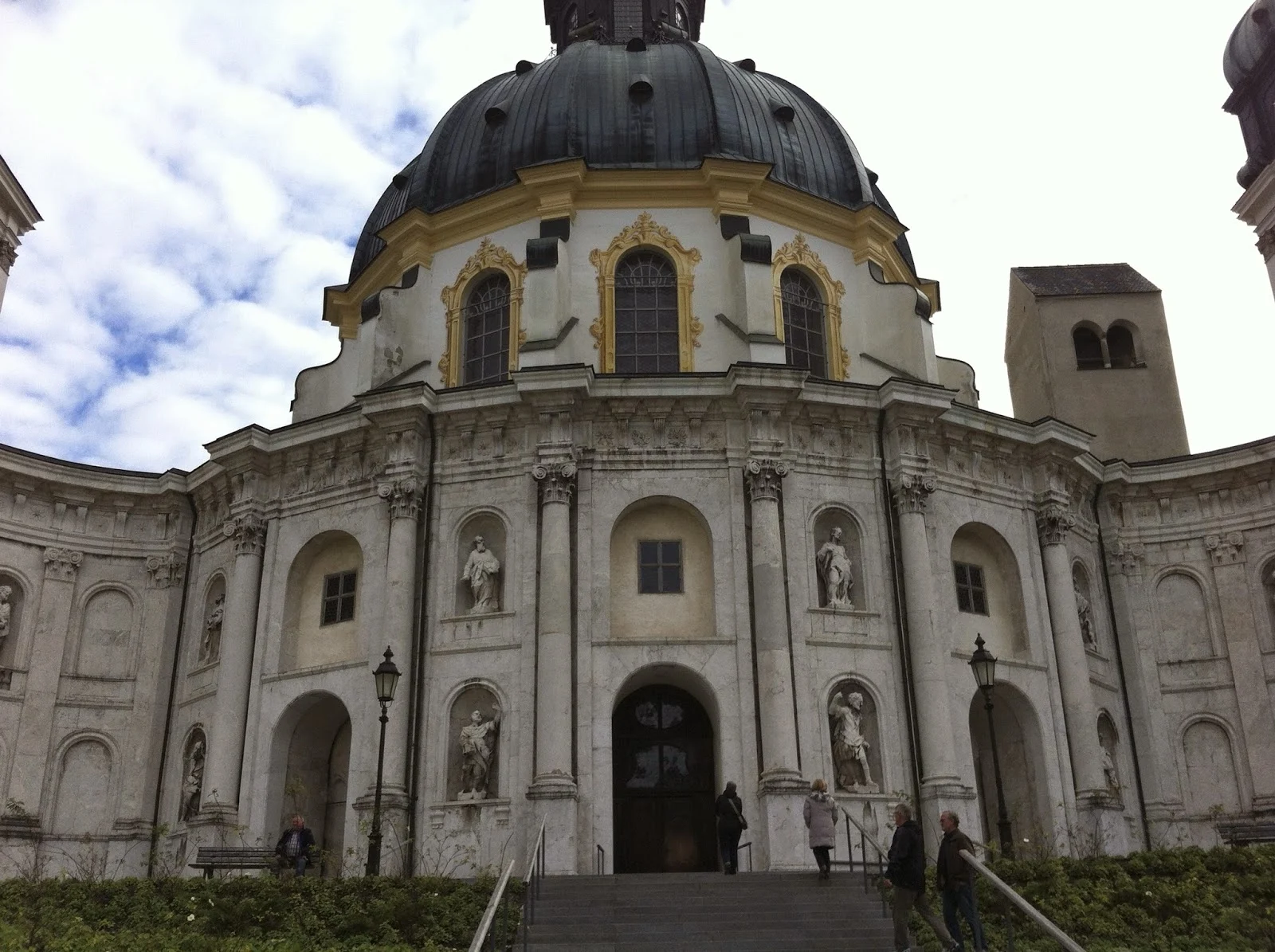Visiting Ettal Monastery on Southern Germany's with Savvy Mom Ruth Paget
Driving along Southern Germany’s Alpenstra§e (Alps Road) after a ride to Neuchwanstein Castle (Ludwig II’s mountain-perched castle), my husband and I admired the craggy, snow-covered Alps and stopped to visit Ettal Monastery.
The Monastery’s visitor’s guide says that Ettal is located
on a connecting road between Augsburg, Germany and Italy, but is still
considered off the beaten track. Ettal
Monastery’s white walls encompass a huge compound that epitomizes the standards
of self-sufficiency laid down by Saint Benedict of Nursia (died 547). Saint Benedict’s “Rule” defines monasticism
and cloistered life in the Western world.
Ettal Monastery’s white walls and ochre trim around the
windows and moldings give the grounds an ethereal, orderly feel with the
snow-covered Alps as a backdrop. There
are 50 to 60 monks at any one time at the monastery, who run a private high
school with boarding school (approximately 380 pupils) according to the visitor’s
guide. The monks also run a brewery, a
liqueur distillery, a hotel, and a publishing house.
The monks do the upkeep on buildings that were founded in
1330 by Emperor Ludwig the Bavarian. At
the time that he founded Ettal Monastery, Ludwig also gave a Madonna and Child
statue that he had brought back from Italy to the church as well. This statue has mad St. Marien Church at
Ettal Monastery a pilgrimage site.
When the Monastery was originally set up, knights and their
wives were supposed to live there and form a sort of Teutonic Order. Their order did not survive, but the building
of their living quarters affected the form and design of Ettal Monastery. A fire in 1744 caused the façade
and interior decorations to be redone in the South German Baroque Style
according to the Monastery’s visitor’s guide.
1700 was the zenith of the South German Baroque Style that
was practiced at Ettal Monastery.
Henrico Zucalli (1642 – 1742) was the first Baroque architect, who
created the foundation for the later architects and artists. After Zucalli, the master builder Joseph
Schmuzer (1683 – 1752) from the Wessobrunn and Rottenbuch Monasteries used
Zucalli’s plans to build an exuberant interior for St. Marien Church that
belies the elegant yet simple exterior.
Artists from the Wessobrunn School did the stucco work for
Ettal Monastery and other churches in the area.
Many of the frescoes and the dome were painted by Jakob Zeiller (1708 –
1783). Martin Knoller (1725 – 1804)
painted the frescoes in the choir, high altar, and three other altars. Both artists came from the Tyrol region of
Southern Germany. The organ (1763) is
the work of Johann Georg Hoerthrich from Swabia.
Leaving the chapel and inhaling the crisp, Alpine air made
me feel as if I had visited heaven.
By Ruth Paget - Author of Eating Soup with Chopsticks and Eating Soup with Chopsticks
Click here for: Ruth Paget's Amazon Books
Click here for: Ruth Paget's Amazon Books
 |
| Laurent Paget Photography |
 |
| Laurent Paget Photography |
 |
| Laurent Paget Photography |
 |
| Laurent Paget Photography |










